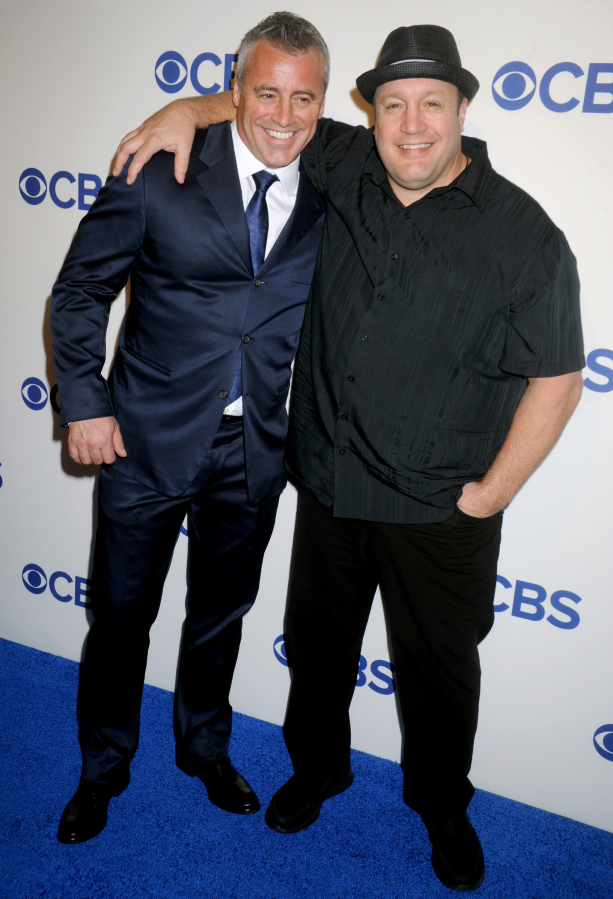In a network TV season featuring roughly a dozen remakes, adaptations and spinoffs, “Kevin Can Wait” is a depressingly unambitious series that, though technically original, feels like a retread.
In his return to series television nine years after “The King of Queens,” Kevin James stars as Kevin Gable, a beer-guzzling, burger-pounding father of three and recently retired cop. Kevin has big plans for his newly acquired free time — think go-karts and paintball — if only his wife, Donna (Erinn Hayes), would quit nagging him about raking the leaves.
Kevin’s kids also get in the way of his juvenile fantasy, particularly oldest daughter Kendra (Taylor Spreitler). She returns home from college to announce that she is engaged and plans to drop out of school to support her fianc?, an app developer named Chale (Ryan Cartwright), whose fuzzy cardigans, British accent and lack of interest in baseball are presented as character flaws.
Created by James, Rock Reuben and Bruce Helford, “Kevin Can Wait” is reminiscent of “The King of Queens,” the long-running CBS sitcom in which James played a blue-collar guy irritated by familial obligations. It feels less like a show of its own than a collection of hoary TV tropes — Schlumpy Guy With a Hot Wife, Wimpy Son-in-Law, Hypochondriac Kid — strung together in service of the pun in the title.
“The King of Queens” benefited from the feisty Leah Remini and an ensemble that included Jerry Stiller and Patton Oswalt. No such luck here. As Donna, Hayes is given little to do other than playing the dull straight woman to her overgrown child of a husband. Kevin’s buddies from the force come across as a generic bunch of beer-swilling oafs. In the show’s only remotely subversive bit, Kevin’s brother Kyle (Gary Valentine, James’ real-life brother) is a firefighter who never actually goes on calls.
James has a self-deprecating charm, but the constant jokes about his gluttony and childishness grow tedious quickly.
Like so many sitcom wives before her, poor Donna is the boring adult in their marriage. She scolds Kevin for blowing $90 on Muscle Milk because he felt inspired while watching “Rocky” and suggests it’s maybe not a great idea to rent a room above the garage to a mouthwash-drinking alcoholic. Women, amirite?
Until Donna fills him in, Kevin is unaware that one of his kids is being treated for anxiety and another was just suspended from school. The implication is that he’s been too busy with work to deal with his family, but she also has a full-time job.
The punchlines reinforce the ridiculous notion that men are somehow ill-equipped to be breadwinners and competent, involved parents at the same time.
“Kevin Can Wait” will do little to quell criticism leveled at CBS over its homogeneous fall shows, all six of which are centered on white, male protagonists.
And it may be hard for viewers to ignore its tiresome premise, given that — beginning in October — it will be paired with the eerily similar “Man With a Plan,” starring Matt LeBlanc as a contractor and father of three struggling to adapt to domestic life when his wife returns to the workforce.
CBS has made much of James’ return to television after nearly a decade spent making critically reviled but commercially successful films like “Paul Blart: Mall Cop” and “Zookeeper.”
While James was away from the small screen, TV comedy has transformed to become more inclusive than ever before.
There is a place for conventional domestic sitcoms about “average families.” Unfortunately, as “Kevin Can Wait” illustrates, these shows are deceptively difficult to pull off, especially when the goal appears to be bland mediocrity.




